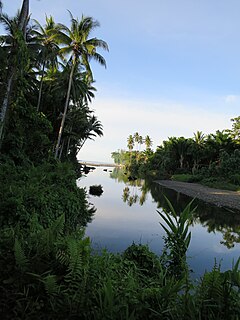
The Solomon Islands rain forests are a terrestrial ecoregion covering most of the Solomon Islands archipelago.

The Northern dry deciduous forests, also known as the North Deccan dry deciduous forests, is a tropical dry broadleaf forest ecoregion of east-central India.

The Northern New Guinea lowland rain and freshwater swamp forests is a tropical moist broadleaf forest ecoregion of northern New Guinea.

The Halmahera rain forests is a tropical moist forest ecoregion in Indonesia. The ecoregion includes the island of Halmahera and neighboring islands, including Bacan, Morotai, the Obi Islands, Ternate, Tidore, Gebe, and many smaller islands.
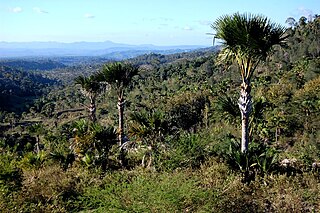
The Timor and Wetar deciduous forests is a tropical dry forest ecoregion in Indonesia and East Timor. The ecoregion includes the islands of Timor, Wetar, Rote, Savu, and adjacent smaller islands.
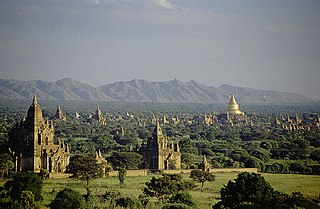
The Irrawaddy dry forests is a tropical dry broadleaf forest ecoregion in central Myanmar. The ecoregion occupies portions of the Irrawaddy, Sittaung, and Salween river basins, in areas with less than 800 mm of annual rainfall.

The Tenasserim–South Thailand semi-evergreen rain forests are a tropical moist forest ecoregion in Southeast Asia. The ecoregion extends north–south along the Kra Isthmus. It includes lowland forests along the coasts, and montane forests in the Tenasserim Hills and Bilauktaung range, which form the mountainous spine of the isthmus.

The Peninsular Malaysian rain forests is an ecoregion on Malay Peninsula and adjacent islands. It is in the tropical and subtropical moist broadleaf forests biome.

The Irrawaddy moist deciduous forests is a tropical moist broadleaf forest ecoregion in central Myanmar. The ecoregion occupies the central basin of the Irrawaddy River and the lower basin of the Salween River. The ecoregion is characterized by forests of tall trees which drop their leaves in the dry season. Most of the ecoregion's forests have been converted to agriculture.
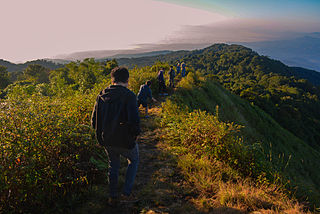
The Kayah–Karen montane rain forests is a tropical moist broadleaf forest ecoregion in Myanmar and Thailand. The montane rain forests cover several connected mountain ranges, including the Dawna Range, Karen Hills, Thanon Thong Chai Range, Daen Lao Range, and Khun Tan Range.

The Myanmar coastal rain forests is a tropical moist broadleaf forest ecoregion in Myanmar. The ecoregion occupies Myanmar's coastal lowlands along the Bay of Bengal and Andaman Sea.

The Chao Phraya lowland moist deciduous forests is a tropical moist broadleaf forest ecoregion in Thailand. The ecoregion occupies the coastal lowlands along the Gulf of Thailand lying east and west of the Chao Phraya River.

The Sulawesi lowland rain forests is a tropical moist forest ecoregion in Indonesia. The ecoregion includes the lowlands of Sulawesi and neighboring islands.

The Vogelkop montane rain forests is a tropical moist forest ecoregion in western New Guinea. The ecoregion covers the mountains of western New Guinea's Bird's Head and Bomberai peninsulas.
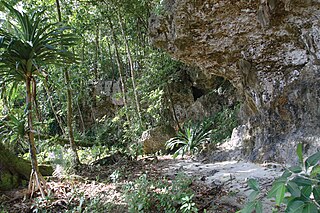
The New Britain-New Ireland lowland rain forests is a tropical moist forest ecoregion in Papua New Guinea. The ecoregion covers the lowland rain forests of New Britain, New Ireland, and nearby islands in the Bismarck Archipelago.
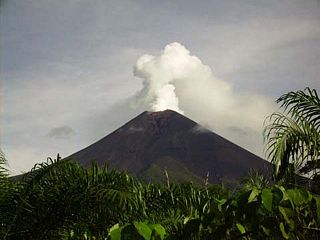
The New Britain-New Ireland montane rain forests is a tropical moist forest ecoregion in Papua New Guinea. The ecoregion includes the mountain rain forests on the islands of New Britain and New Ireland, which lie northeast of New Guinea.

The Northern New Guinea montane rain forests is a tropical moist forest ecoregion in northern New Guinea. The ecoregion covers several separate mountain ranges lying north of New Guinea's Central Range and south of the Pacific Ocean.

The Southeastern Papuan rain forests is a tropical moist forest ecoregion in southeastern New Guinea. The ecoregion covers the mountainous center and coastal lowlands of the Papuan Peninsula.

The Southern New Guinea lowland rain forests is a tropical moist forest ecoregion in southeastern New Guinea. The ecoregion covers portions of New Guinea's southern lowlands.




















